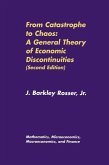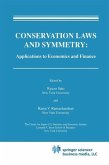This advanced textbook aims at providing a simple but fully operational introduction to applied general equilibrium. General equilibrium is the backbone of modern economic analysis and as such generation after generation of economics students are introduced to it. As an analytical tool in economics, general equilibrium provides one of the most complete views of an economy since it incorporates all economic agents (households, firms, government, foreign sector) in an integrated way that is compatible with microtheory and microdata. The integration of theory and data handling is required for successful modeling but it requires a double ability that is not found in standard books. With this book we aim at filling the gap and provide advanced students with the required tools, from the building of consistent and applicable general equilibrium models to the interpretation of the results that ensue from the adoption of policies. The topics include: model design, model development, computer code examples, calibration and data adjustments, practical policy examples.
Dieser Download kann aus rechtlichen Gründen nur mit Rechnungsadresse in A, B, BG, CY, CZ, D, DK, EW, E, FIN, F, GR, HR, H, IRL, I, LT, L, LR, M, NL, PL, P, R, S, SLO, SK ausgeliefert werden.
From the reviews:
"The authors' aim is to provide readers with the tools needed to construct their own models. I applaud them for their success. After reading the book, students should be able to build an AGE model because they will have gained an understanding of its internal logic. ... this is a very useful book that should be on the shelf of any student of AGE modeling. ... Even the most complicated issues are tackled in an easy-to-understand way, which makes the book quite accessible." (María Teresa Álvarez-Martínez, The Review of Regional Studies, Vol. 42 (1), 2012)
"The authors' aim is to provide readers with the tools needed to construct their own models. I applaud them for their success. After reading the book, students should be able to build an AGE model because they will have gained an understanding of its internal logic. ... this is a very useful book that should be on the shelf of any student of AGE modeling. ... Even the most complicated issues are tackled in an easy-to-understand way, which makes the book quite accessible." (María Teresa Álvarez-Martínez, The Review of Regional Studies, Vol. 42 (1), 2012)









